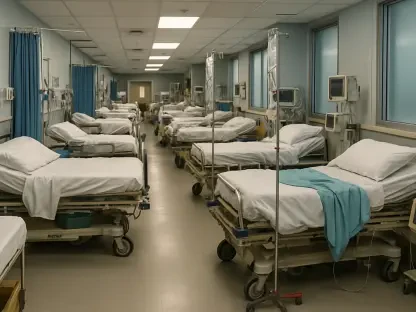The devastating impact of natural disasters, such as the St. Louis tornado, often magnifies systemic inequities that have long plagued under-resourced communities. As climate change accelerates the frequency and intensity of such events, the delicate balance between immediate relief efforts and long-term recovery processes becomes crucial. This challenge is faced by marginalized residents who often bear the brunt of both natural and man-made calamities, revealing a complex web of socio-economic vulnerabilities. Community resilience emerges as a pivotal force, potentially able to navigate the intricate aftermath while striving to bridge the gaps left by systemic deficiencies. However, this resilience is tested through prolonged recovery periods, bureaucratic hurdles, and the uncertainty of federal aid—all set against the backdrop of glaring racial and economic disparities. As efforts intensify to address these issues, the role of volunteers and local activists becomes a focal point, illustrating the community’s unyielding spirit despite ongoing adversities.
Tornado’s Impact and Socio-Economic Disparities
The St. Louis tornado struck a nerve, illuminating longstanding socio-economic disparities in communities already struggling with systemic inequities. The storm revealed the stark divide between affluent neighborhoods and predominantly Black communities like North City that were hardest hit. This disparity is echoed in the varied recovery times, where more affluent areas rebounded quickly, while North City remains trapped in a slow, difficult recovery process. The tornado damaged countless properties, and for many residents, such damage exacerbated existing challenges related to healthcare, incarceration, and poverty. These issues were articulated profoundly by community activists like Kayla Reed, who noted the intersection of natural and systemic disasters. The urgent need for equity in recovery efforts becomes apparent as residents in under-resourced areas face mounting obstacles. The complexity of addressing these inequities was highlighted as the community navigated the damaged infrastructure and the subsequent need for emergency medical care and basic utilities that became scarce.
Challenges of Community and Federal Response
The path to recovery is marked by challenges, as seen in the response by both the community and federal agencies. Despite the overwhelming need for aid, bureaucratic hurdles often delay federal assistance, leaving residents in a precarious situation. Governor Mike Kehoe appealed to President Trump for a federal emergency declaration, seeking a significant support package, yet the waiting process is often prolonged, as seen in past denied disaster requests. The intricate paperwork and protracted procedures can stall relief for weeks, adding to the anguish of affected communities. Such delays underscore the critical role of local and voluntary initiatives in providing immediate relief. This “People’s Response,” reminiscent of past grassroots mobilizations in Ferguson, reveals the profound commitment of volunteers. Thousands have contributed to aiding families, exemplifying community resilience amid adversities. The visible challenges faced by residents, especially in areas with disrupted power and communication lines, underscore the immediate need for sustained aid.
Community Resilience and Volunteer Mobilization
Within the chaos, community resilience shines as residents band together in solidarity. Volunteers have emerged as pillars of support, stepping up to provide essential services during moments of despair. Their efforts are vital, offering temporary lifelines as the community awaits federal intervention. This robust volunteer mobilization recalls the aftermath of past crises, illustrating determination to uplift fellow residents. Their work in aiding nearly 5,000 families underscores the magnitude of this grassroots movement. Such resilience is embodied by individuals like Kevin Hines, who defied personal setbacks to assist neighbors, reflecting a broader trend of communal perseverance. Despite facing personal losses, these resilient figures embody the spirit of unity, reinforcing the notion that collective strength can indeed be a counterbalance to systemic inequities. The tangible actions of volunteers offer hope, bridging temporary relief with the necessity for comprehensive long-term recovery strategies. Here, community resilience showcases its potential to influence broader social change beyond immediate disasters.
The Path Forward: Embracing Resilience and Systemic Change
Natural disasters, like the destructive tornado in St. Louis, often highlight chronic inequities inherent in under-resourced communities. As climate change triggers more frequent and severe events, the need to balance immediate relief and long-term recovery becomes essential. Marginalized communities frequently suffer the most from these natural and man-made disasters, uncovering a network of socio-economic vulnerabilities. Community resilience becomes crucial, serving as a guiding force in dealing with the aftermath while attempting to mend the gaps left by systemic flaws. Yet, this resilience faces challenges due to drawn-out recovery times, bureaucratic red tape, and uncertain federal aid. All these issues are framed by stark racial and economic disparities. As efforts grow to tackle these challenges, the impact of volunteers and local activists comes to the forefront. They embody the community’s persistent spirit, unwavering even in the face of continuous hardships, illustrating a commitment to overcoming adversities despite numerous challenges.









